The Colt M1911 competes with the Browning HP as one of the most successful pistols produced. It has been manufactured in millions and is in widespread service worldwide some 90 years after being first standardized for service in 1911.
Colt-based design
The design had its origins well before then. However, the weapon was based on a Colt-Browning Model 1900 design. This weapon was taken as the basis for a new service pistol required by the US Army to fire a new 0.45-in (11.43-mm) cartridge deemed necessary as the then-standard caliber of 0.38 in (9.65 mm) was considered by many to be too light to stop a charging enemy. The result was a series of trials in 1907, and in 1911, the Pistol, Automatic, Caliber, 45, M1911 was accepted. Production was, at first, slow, but by 1917 was well enough underway to equip in part the rapid expansion of the US Army for its new role in France.
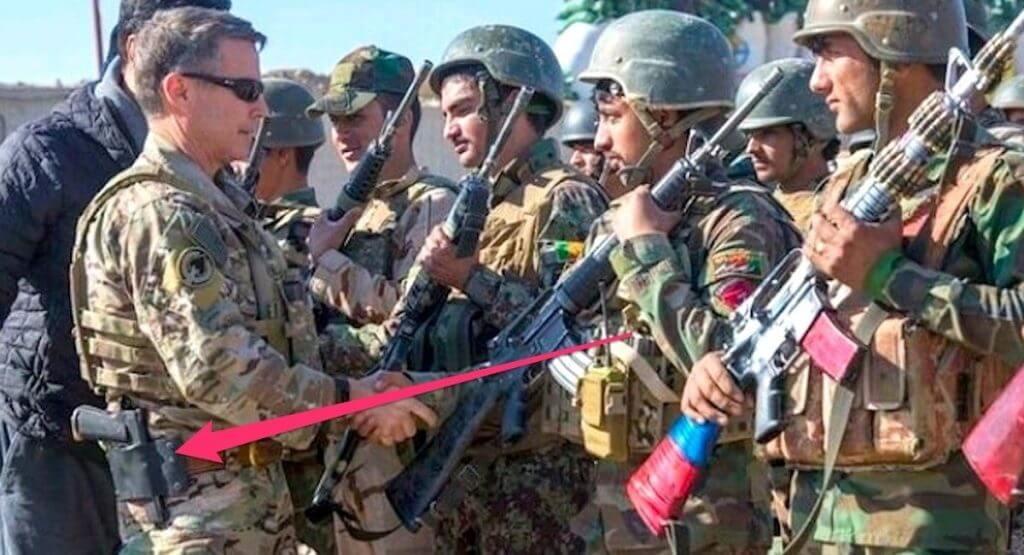
Production changes
As a result of that battle experience, it was decided to make some production changes to the basic design, leading to the M1911A1. M1911 is also sometimes referred to as Colt 45. The changes were not extensive, being confined to items such as the grip safety configuration, the hammers spur outline, and the mainspring housing.
Overall the design and operation changed only a little The basic methods of operation remained the same, and this mechanism is one of the strongest ever made. Whereas many contemporary pistol designs employed a receiver stop to arrest the backward progress of the receiver slide, the M1911 had a locking system that also produced a more positive stop.
The barrel had lugs machined into its outer surface to match corresponding lugs on the slide. When the pistol was fired, the barrel and slide moved backward a short distance with these plugs still engaged. At the end of this distance, the barrel progress was arrested by a singing link which swung round to pull the barrel lugs out of the receiver slide, which was then free to move further and so eject the spent case and restart the loading cycle.
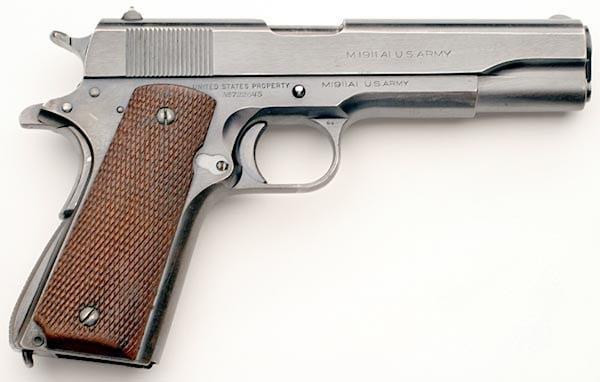
This robust system, allied with positive applied safety and grip safety, makes the M1911 and M1911A1 very safe weapons under service conditions. But the pistol is a bit of a handful to handle and fire correctly, and a good deal of training is required to use it to full effect.
The Colt M1911 and Colt M1911A1 were both been manufactured by numerous companies other than Colt Firearms, and have been widely copied directly in many parts of the world, now always to very high levels of manufacture. The Modified ‘fine-tuned’ variant continues to serve with the U.S. Marine Corps, US Army Special Forces, and US Navy.
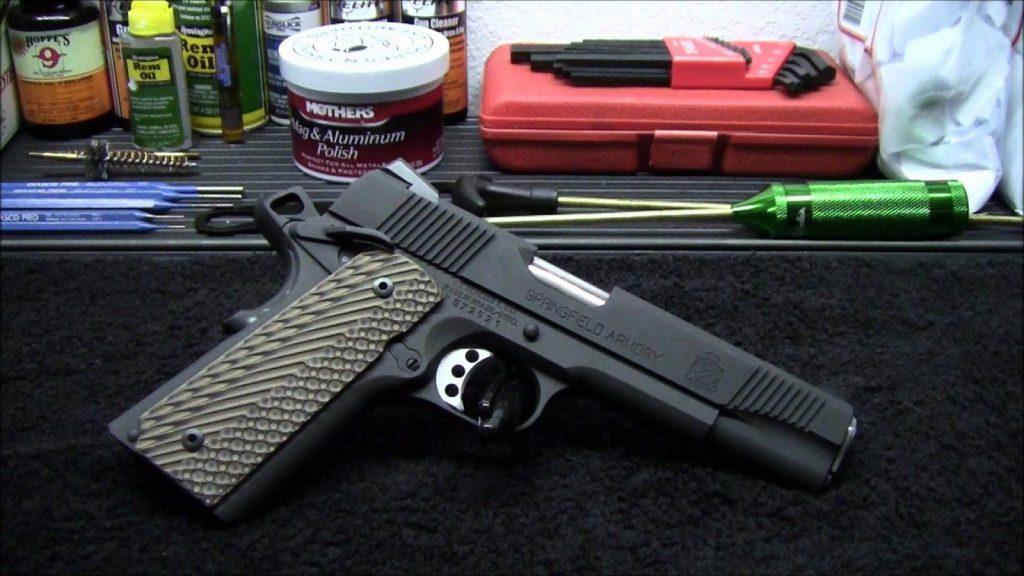
User experience
It is a fantastic pistol, with the only drawback, in my opinion being a somewhat awkward situation that this type of action imposes on the user when the pistol is carried on the person for self-defense. It gives you three choices; one is to carry it in what is called the “cocked and locked” method.
Which is to carry it with a live round in the chamber, and the hammer at full cock, with the safety on. If not for the person who carries it, this is a bit uncomfortable, then for those around him who might know of this. It requires faith in the person’s skill in charge of the weapon. Perhaps I should have begun by explaining that Colt’s semi-automatic single action requires the hammer to be manually pulled into the full cocked position by using the slide or the thumb before the pistol will fire.
And that’s the rub. If you need to draw and fire in a hurry, you must carry it cocked and locked or carry it with the hammer down on a live round, which is dangerous if the pistol is dropped or the hammer is accidentally struck, which is very easy to do. I know of an accidental discharge occurred when the hammer collided with a steering wheel in a minor accident. Fortunately, no injuries, but if a passenger had been behind the driver???
You can opt to carry it with a full magazine, hammer it down on an empty chamber. Not a fast way to get the first shot off if you need to work the slide and not quiet should you need to say, investigate a sound at night in your home. Of the three methods, I carry mine hammer down on a live round in a cross-draw waistband holster with a thumb strap to secure it.
If I need it quickly (and I have), I draw it and cock the hammer with a sweep of my left hand. This makes my left hand possible to be struck by the slide when I fire the first shot. But if I need it that badly in a big hurry, I don’t care.
Technical specifications: Colt M1911
| Manufacturer: | Colt’s Manufacturing Company, United States |
| Type: | semi-automatic pistol, short recoil operation |
| Caliber: | 0.45 ACP |
| Barrel: | 128 mm (5.03in) |
| Weight (empty): | 1,36 kg (3 lb) |
| Magazine capacity: | 7 rounds |
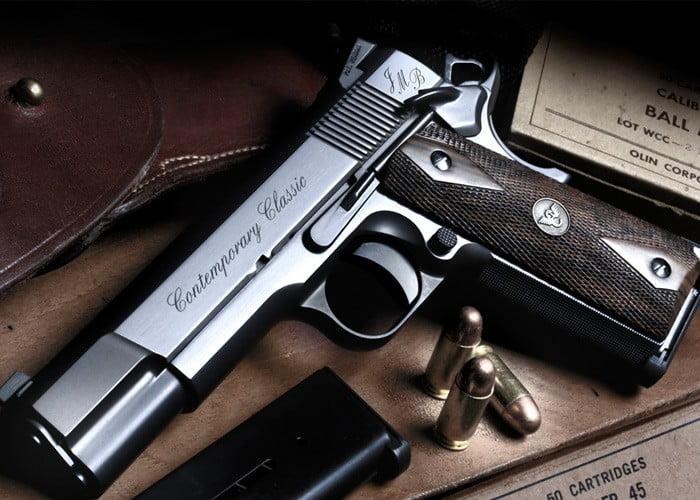





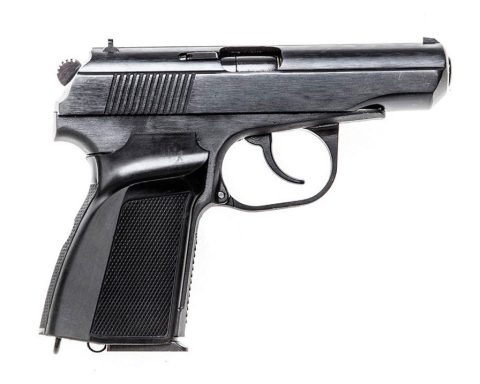
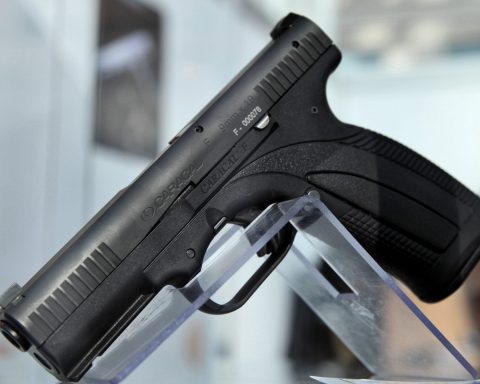
How much?
#AMERICAspistol
carried one in Nam. it wouldn’t die,,in the mud , in water, dropped, dirty, it always worked. Thank you John Browning
Competed with a modified colt (ejection adjustment, held properly brass is in a 3 ft radius behind you) home defense with a 10 rd mag and “flying ashtray” rounds. Sleep soundly…
Best Hand gun ever made for close combat if you been in it you would no it if hit buy this your down then one more move on saved many a man’s life God bless the 1911 🥃
Carrying with the hammer down is stupid, slow, reckless, and demonstrative of the actions of an untrained amateur.